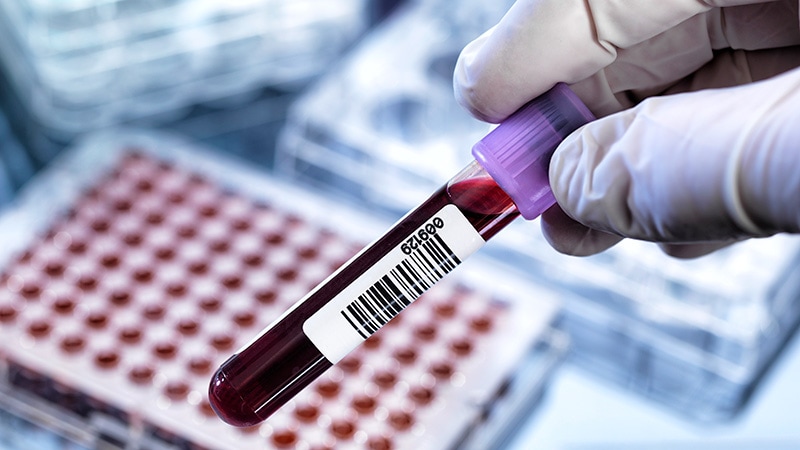Forty-five circulating proteins in plasma are linked to the risk for myocardial infarction (MI), showed a new study that confirms some known associations and identifies new ones. Several proteins are associated with MI in women but not men, and some proteins linked with MI in both men and women are more strongly associated with MI in women.
“We hope that our study will shed light on pathways in MI,” said principal author Olga Titova, PhD, an epidemiologist at Uppsala University in Uppsala, Sweden. The work is published in the European Heart Journal.
Martha Gulati, MD, a cardiologist and associate director of the Barbra Streisand Women’s Heart Center at Cedars-Sinai Medical Center in Los Angeles and co-author of an accompanying editorial, said the novel discovery of different patterns between men and women makes this an exciting study. The findings “highlight that sex differences in disease phenotype begin at the molecular level,” she said.
Titova and her team analyzed thousands of patients in two databases — one in Sweden (11,751 patients), the other in the United Kingdom (51,613 patients) — to discover proteins in the patients who went on to have an MI. Using one database to discover biomarkers and a second to replicate the findings is a common approach, said Titova.
Casting a Wide Net to Catch Proteins
The two databases “make findings more generalizable, allow us to confirm robust associations, and help minimize the risk of false positives.” The two databases mean researchers are more confident that the findings can be applied across populations, Titova added.
A total of 44 proteins were associated with later MI in both databases, adjusted for common MI risk factors as well as such factors as education, diet, physical activity, and alcohol intake, Titova explained. An additional protein was included from the first database that was unavailable in the second. Some of the proteins have been found in other studies, and this study confirms the link. Others were new, and a few appear to protect patients from MI.
“Most of the proteins are related to or involved in inflammation and atherosclerosis,” said Titova.
This is the first study to cast such a wide net, Titova pointed out. While several proteins have previously been linked to MI, most earlier studies have focused on specific proteins in populations that already have coronary artery disease or have involved cohorts of men only.
But she stresses that this study poses more questions than it answers. More research is needed to determine how proteins are involved in pathways leading to MI. The study found that some proteins may be mediators of general cardiovascular disease risk, whereas others are involved in mechanisms specifically linked to MI. Many proteins are involved in atherosclerosis, thrombosis, inflammation, immune system–related pathways, injury and tissue repair, coagulation, bone homeostasis, and iron metabolism.
“At this point, some [proteins] appear to be causal, some seem to be an association,” said Titova. It remains to be determined “which are on the causal path, which are potential biomarkers, which are going to shed light on the mechanisms” of MI.
The study took a step toward determining which proteins might be involved in causing MI through an analysis of some protein levels determined by genetics. This found three proteins linked to a higher risk for MI and three linked to a lower risk.
It’s Different for Women
Thirteen of the proteins were linked with later MI in women, either exclusively or more strongly than in men. Many of these associations were replicated in the second database, showing an alignment across populations.
Titova said the reason for the sex difference remains a mystery. “We have to go to the molecular level. It could be a consequence of risk factors affecting the sexes differently or different biology” between men and women.
Gulati, who specializes in women’s heart health, explained, “We know inflammation is much more prevalent in women and is the pathway to cardiovascular disease.” She points out that noncardiac inflammatory diseases are also more prevalent in women. Other biomarkers for inflammation, such as C-reactive protein, are higher in women than in men. She thinks the underlying mechanisms could involve “how we [women] make our proteins and how we respond to hormones.”
By identifying proteins linked to MI in women, the study helps to fill an important gap in our knowledge. “I can’t tell you how many papers don’t even look at sex differences. If we don’t look, we won’t know there are differences,” Gulati said. “In much of our cardiac research, women are underrepresented.”
The findings of this trial and others like it may lead to new approaches to prevention and treatment, Titova and Gulati agreed. Several proteins found in this study that may have a causal link with MI are already targets of drug development, they added.
Titova said other proteins may be useful in the future as biomarkers that indicate a need for preventive action.
Gulati asked, “If we can show some of the proteins are involved in the inflammatory response — if they are causal and we can prevent them upfront — can we reduce the chance of MI?” She and Titova said the many questions remaining should prove a rewarding avenue for research.
Source link : https://www.medscape.com/viewarticle/proteins-plasma-linked-mi-especially-women-2024a1000ovp?src=rss
Author :
Publish date : 2024-12-23 08:54:10
Copyright for syndicated content belongs to the linked Source.
